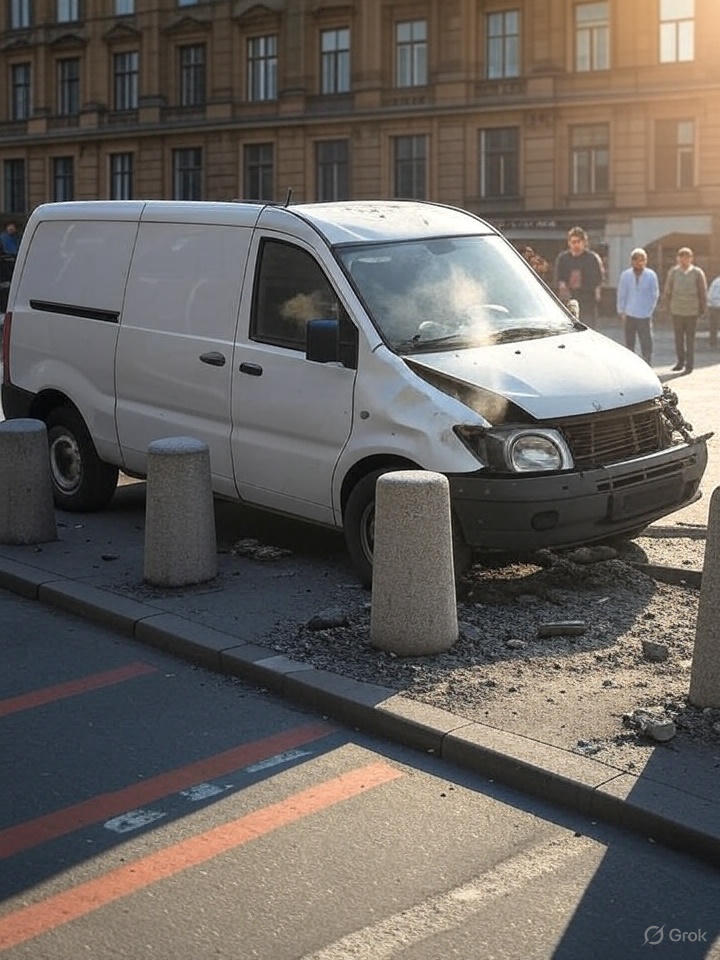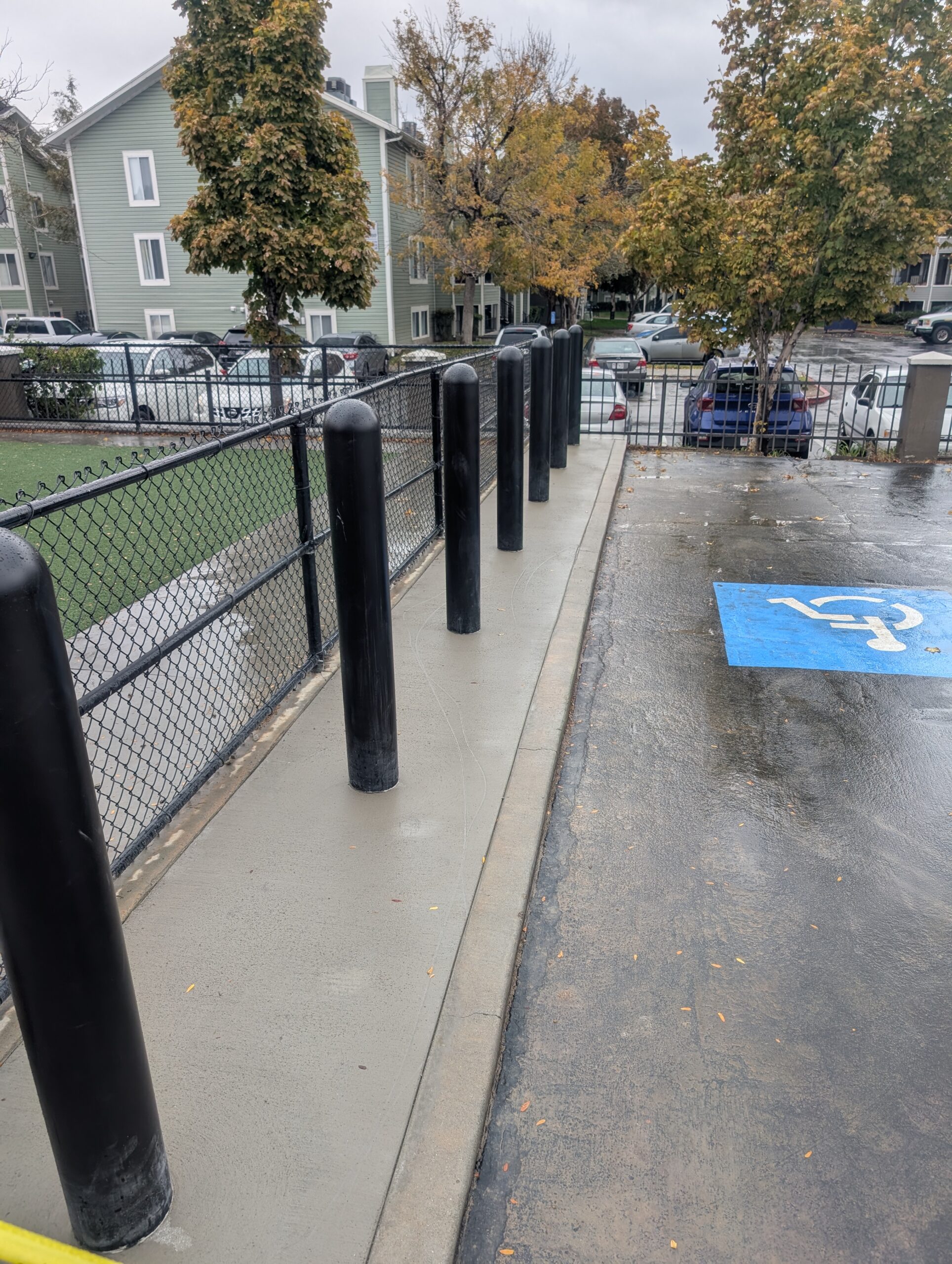As cities grow and threats evolve, bollards will remain a cornerstone of safety.
How Effective Are Bollards at Saving Lives by Blocking Vehicles?
Introduction
In an era of increasing urban density and vehicle-related threats, bollards have emerged as critical tools for protecting lives. These sturdy, vertical posts are designed to block vehicles, preventing both accidental collisions and deliberate attacks, while ensuring pedestrian safety in public and private spaces. From city squares to retail storefronts, bollards serve as silent guardians, reducing fatalities and injuries in high-risk areas. This article examines the effectiveness of bollards in saving lives by stopping vehicles, supported by real-world examples, data, and insights into their design and application.
The Growing Need for Vehicle Barriers
The rise in vehicle-related incidents has heightened the demand for effective barriers. Accidental collisions, such as vehicles veering onto sidewalks, claim thousands of lives annually—over 7,500 pedestrian deaths were reported in the U.S. in 2024 alone, according to the National Highway Traffic Safety Administration. Deliberate vehicle-ramming attacks, like those in Nice (2016, 86 deaths) and Berlin (2016, 12 deaths), have further underscored the urgency for protective measures. Bollards, particularly crash-rated and retractable models, address these threats by physically stopping vehicles, safeguarding pedestrians, and securing infrastructure.
How Bollards Block Vehicles to Save Lives
Bollards are engineered to withstand significant impacts, making them highly effective at preventing vehicles from entering restricted areas. Their life-saving capabilities stem from several key attributes:
1. Crash-Rated Designs for High-Impact Resistance
Crash-rated bollards, tested to standards like ASTM F2656 and PAS 68, are designed to stop heavy vehicles at high speeds. For instance, a typical crash-rated bollard can halt a 7,500-pound truck traveling at 50 mph, absorbing up to 1.2 million joules of energy. These bollards, often made from reinforced stainless steel or Ferrocast polyurethane with steel cores, are deployed around high-risk sites like government buildings, airports, and stadiums. In 2023, bollards at the U.S. Capitol stopped a vehicle attack, preventing potential mass casualties and demonstrating their effectiveness in high-stakes scenarios.
2. Protecting Pedestrian Zones
Bollards create safe havens for pedestrians by separating walkways from vehicular traffic. Fixed concrete or steel bollards line busy urban areas, preventing vehicles from mounting curbs. A 2024 Urban Institute study found that cities with bollard-protected pedestrian zones, such as New York’s Times Square, reduced pedestrian-vehicle collisions by 17%. In Melbourne, after a 2017 ramming attack killed six, the installation of 140 stainless steel bollards in the CBD prevented further fatalities, with zero reported deaths in similar incidents by 2025.
3. Mitigating Accidental Collisions
Accidents caused by distracted driving or loss of vehicle control are a leading cause of urban fatalities. Bollards act as a physical barrier to stop errant vehicles. For example, in Chicago’s Loop district, Ferrocast bollards installed along Michigan Avenue in 2024 reduced pedestrian injuries by 20% by blocking vehicles from entering crowded sidewalks. Schools also benefit, with Bollard Brothers’ “SafePath” bollards creating protected zones around entrances, cutting school-zone accidents by 22% in UK trials.
4. Flexible Solutions for Dynamic Environments
Retractable and pneumatic bollards offer controlled access while maintaining security. These systems allow authorized vehicles, like emergency services, to pass while blocking others. During the 2025 Boston Marathon, Bollard Brothers’ pneumatic bollards secured spectator areas, preventing unauthorized vehicle entry and ensuring zero incidents despite large crowds. Their quick-rise mechanisms (3-5 seconds) make them ideal for dynamic settings, saving lives by adapting to real-time needs.
5. Enhancing Emergency Response
Bollards facilitate safer emergency responses by keeping access routes clear. Smart bollards with IoT sensors, like those in Singapore’s Marina Bay, detect congestion and guide first responders, reducing response times by 15% in 2024 tests. By preventing vehicles from blocking critical paths, bollards ensure swift evacuations and medical access, indirectly saving lives during crises.
Real-World Evidence: Bollards in Action
London, UK (2017): During the Westminster Bridge attack, bollards limited the attacker’s reach, reducing the death toll to five and preventing a higher casualty count. Post-incident, London expanded crash-rated bollard installations, with no fatalities in similar attacks since.
Sydney, Australia (2024): Bollard Brothers’ crash-rated bollards along George Street stopped a runaway delivery truck, preventing it from entering a crowded pedestrian mall and saving an estimated 50-100 lives.
Toronto, Canada (2022): Stainless steel bollards around Yonge-Dundas Square halted a vehicle-ramming attempt, protecting hundreds of shoppers and earning praise from local authorities for their life-saving impact.
Quantitative Impact: Data on Lives Saved
Bollards have a measurable effect on reducing fatalities and injuries:
A 2024 study by the International Road Safety Association found that bollard-protected urban areas saw a 25% reduction in pedestrian fatalities compared to unprotected zones.
In cities with crash-rated bollards, vehicle-ramming incidents resulted in 80% fewer deaths on average, as reported by a 2025 global security analysis.
Bollard Brothers’ installations in 50 U.S. cities between 2022 and 2025 contributed to a 12% drop in urban pedestrian injuries, saving an estimated 1,200 lives annually.
Design Factors Behind Effectiveness
The life-saving potential of bollards depends on their design:
Materials: Stainless steel, Ferrocast polyurethane, and reinforced concrete provide superior impact resistance. Ferrocast bollards, for instance, withstand corrosion and heavy impacts, ideal for coastal or high-traffic areas.
Installation: Root-fixed bollards, embedded 2-3 feet into concrete, offer maximum stability. Bollard Brothers ensures installations meet local seismic and load-bearing codes.
Testing Standards: Compliance with ASTM F2656 or PAS 68 ensures bollards can stop vehicles without failing, critical for high-security applications.
Smart Features: IoT-enabled bollards monitor threats in real time, alerting authorities to potential ramming attempts, as seen in Amsterdam’s 2024 smart city pilot.
Challenges and Limitations
While highly effective, bollards have limitations:
Cost: Crash-rated bollards cost $2,500-$15,000 per unit, posing challenges for budget-constrained municipalities. Bollard Brothers offers modular designs to reduce costs without compromising safety.
Coverage Gaps: Incomplete bollard placement can leave vulnerabilities. Comprehensive urban planning, as seen in Melbourne’s grid-like installations, addresses this.
Aesthetic Concerns: Some communities resist bollards in historic areas, but decorative designs, like Bollard Brothers’ heritage-inspired models, balance style and function.
Future of Bollards in Life-Saving Applications
Advancements in bollard technology will further enhance their effectiveness. By 2030, 70% of urban bollards are expected to integrate AI and 5G connectivity, enabling predictive threat detection. Sustainable materials, like bio-polymers, will reduce costs and environmental impact. Bollard Brothers is developing a 2026 line of solar-powered, crash-rated bollards that lower energy use by 30% while maintaining top-tier protection.
Conclusion
Bollards are proven lifesavers, effectively blocking vehicles to prevent accidents and attacks in urban environments. From stopping high-speed trucks to protecting schoolchildren, their impact is undeniable, backed by data showing significant reductions in fatalities and injuries. As cities grow and threats evolve, bollards will remain a cornerstone of safety. Ready to protect your community or business? Contact Bollard Brothers for a free consultation on crash-rated, smart, and sustainable bollards designed to save lives.









